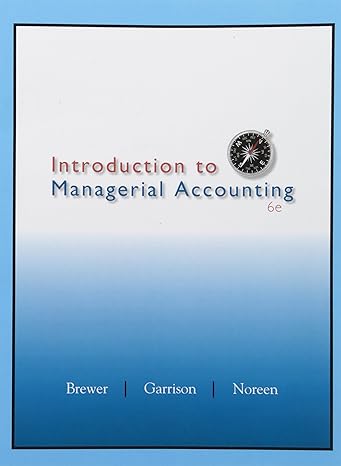Answered step by step
Verified Expert Solution
Question
1 Approved Answer
In the tables that follow you will find consolidated balance sheets for the commercial banking system and the 12 Federal Reserve Banks. Use columns 1
In the tables that follow you will find consolidated balance sheets for the commercial banking system and the 12 Federal Reserve Banks. Use columns 1 through 3 to indicate how the balance sheets would read after each of transactions a to cis completed. Do not cumulate your answers; that is, analyze each transaction separately, starting in each case from the numbers provided. All accounts are in billions of dollars. Instructions: Enter your answers as a whole number. Assets: Reserves Securities Loans Liabilities and net worth: Consolidated Balance Sheet: All Commercial Banks 2 Checkable deposits Loans from the Federal Reserve Banks 3 $34 $ 38 $ 28 $ 39 58 $ 58 $ 58 53 62 $ 62 $ 62 $ 62 $ 150 $ 150 $ 144 $ 150 4 S 8 $ 4 $ 4 Assets: Consolidated Balance Sheet: 12 Federal Reserve Banks 1 2 3 Securities $60 $ 60 $ 54 $ 65 Loans to commercial banks 4 $ 8 $ 8 S 4 Liabilities and net worth: Reserves of commercial banks $34 $ 38 $ 28 $ 39 Treasury deposits 3 $ 3 $ 3 $ 3 Federal Reserve Notes: 27 $ 27 $ 27 $ 27 a. A decline in the discount rate prompts commercial banks to borrow an additional $5 billion from the Federal Reserve Banks. Show the new balance sheet numbers in column 1 of each table. b. The Federal Reserve Banks sell $7 billion in securities to members of the public, who pay for the bonds with checks. Show the new balance sheet numbers in column 2 of each table. c. The Federal Reserve Banks buy $6 billion of securities from commercial banks. Show the new balance sheet numbers in column 3 of each table. d. Now review each of the above three transactions, asking yourself these three questions: (1) What change, if any, took place in the money supply as a direct and immediate result of each transaction? (2) What increase or decrease in the commercial banks' reserves took place in each transaction? (3) Assuming a reserve ratio of 20 percent, what change in the money-creating potential of the commercial banking system occurred as a result of each transaction? Transaction a (1) The money supply did not change (2) Reserves increased from $34 billion to $ 38 billion. (3) The money-creating potential increased by $ 20 billion. Transaction b (1) The money supply decreased by $ 6 billion. (2) Reserves decreased from $34 billion to $ 28 billion. (3) The money-creating potential decreased by $ 30 billion. Transaction c (1) The money supply increased (2) Reserves increased from $34 billion to $ 39 billion. (3) The money-creating potential increased by $ 25 billion
Step by Step Solution
There are 3 Steps involved in it
Step: 1

Get Instant Access to Expert-Tailored Solutions
See step-by-step solutions with expert insights and AI powered tools for academic success
Step: 2

Step: 3

Ace Your Homework with AI
Get the answers you need in no time with our AI-driven, step-by-step assistance
Get Started


